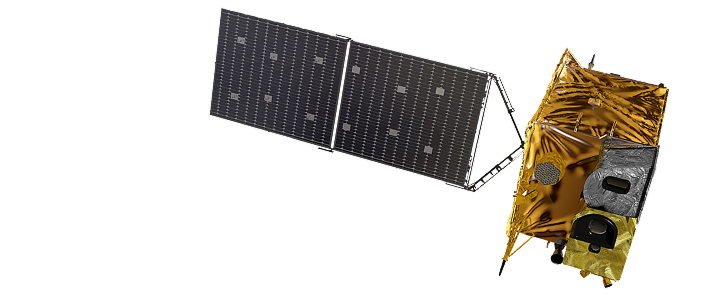



The environmental payload(GEMS) mounted in Cheollian 2B is a hyperspectral imager that continuously observes Earth's atmospheric environment. It acquires images and spectral data that divide the UV and visible light band spectrum into 1000 fine wavelengths to produce information on the generation point and migration route of about 20 chemical substances like nitrogen dioxide, sulfur dioxide, and formaldehyde, which are precursors of short- and long-term climate change-causing substance, aerosol, and fine dust. GEMS observes atmospheric pollutants and climate change-causing substances on the Korean Peninsula and East Asia. It carries significance as the world's first geostationary environmental satellite launched 2-3 years earlier than the US and Europe.
Using an environmental payload enables continuously observing atmospheric pollutants, which are currently observed only by low-orbit satellites, from the geostationary orbit for the first time in the world. It is expected to observe an area spanning 5,000× 5,000km in East Asia from the east of Japan to the Indochina Peninsula and from Northern Indonesia to Southern Mongolia 8 times a day for 30 minutes.
Until now, fine dust monitoring and analysis have used meteorological satellites or ground observatories, and approximate flows have been available. Nonetheless, adding observation data acquired by the environmental payload improves forecast accuracy by monitoring atmospheric pollutants migrating long distances abroad. It is expected to contribute to improving people’s health and quality of life. Moreover, when TEMPO, the geostationary orbit environmental satellite being developed in the US, and Sentinel 4 UVN as the geostationary orbit environmental satellite being developed in Europe are launched along with Cheollian 2B, they are expected to monitor the entire process of generation, migration, and extinction of environmental pollutants in the global scope and identify the impact and interaction of the precursors.